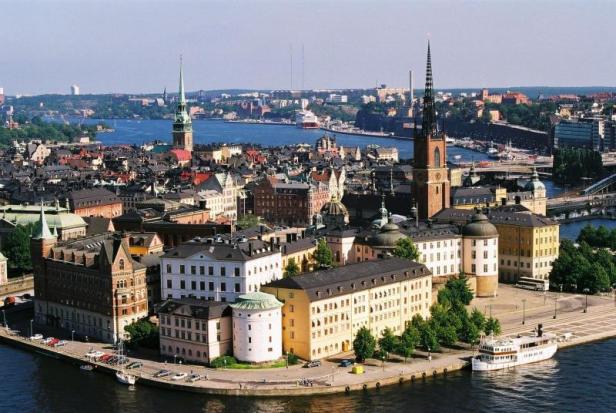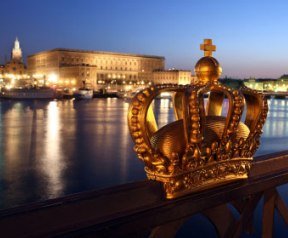No big
plans. Producers asked me if I was interested and then we found a tv station
interested in the program. After the first season, they asked me do you want to
continue and I said yeah, so we did another season that just finished in the
US.
It wasn’t
even my idea. I never thought about doing a tv show, but I like doing different
things. It keeps me awake. Now it takes quite a long time of my year and it
needs detailed planning. It is not easy. To make good interviews to people it
burns a lot of calories.
List of
guests
I pick the
guests. I’m interested in a lot of people, so my wanted list is huge. We call
them and most of them say no for various reasons: “I’m not interested. Henry
Rollins? I hate that guy! We are busy, we live on Mars, we cannot make it”.
Someone you
really want
Tons of
them. Bob Dylan, Al Gore, Keith Richards, David Lynch, Martin Scorsese, Brain
De Palma… There are a lot of interesting people in the world, doing great
things from art to reporting. For example, there is a lot of investigative
reporters, like Greg Palast and Christian Miller. I’m interested in all kinds
of people.
Live
performance of bands
There’s a
couple of bands I didn’t pick. Since it’s not my money, I don’t get to make all
the choice, so there are some bands that stick out for their MTVness. Nice
people, anyway. They showed up, they played well, but I have none of their
records. The rest of the bands I either know them and love them or I have
toured and played with them. I’m fan of them, I play their songs on my radio
show. In the seasons we just finished we had Iggy Pop and The Stooges, Peachs,
Manu Chao, who made his first American TV appearance ever. He’s huge all around
the world, but not in America. He’s a wonderful guy, very humble. He came to
play at the Coachella festival and all the tv stations invited him, but he say
no to all of them and yes to us. Why? I don’t know. We were lucky. The Good,
The Bad and The Queen played also. That was a highlight for me. I walked into
to the studio, turn around the corner and there’s Paul Simmons, the bass player
of The Clash. I was wow!! Also Fela Kuti and Tony Allen… I was, yeah! I love
this job.
Conan
O’Brien is very popular here.
I think
he’s good. It’s a very normal kind of interview show. They interview pretty
famous people about being famous and pretty. I think Conan is very talented and
funny. He used to write for The Simpsons. He’s very funny guy, but it’s not the
kind of TV show I watch. I don’t care about an interview with half of the cast
of Friends. I fall asleep. I don’t care.
Events in
Europe.
Somewhat…
but quite honestly and I’m not trying to devalue what goes on in Europe. I
think that America could learn a couple of things from Europe, but I’m very
concerned about the current Administration in the US. I primarily focus on and
research on the daily catastrophe in Iraq. I try to understand our relations
with Iran and Syria and what the president is doing to destroy our
Constitution. Right now Europe is not a priority for me because I’m watching my
own country going up in flames.
Tour for
the troops
Yes, I did
it. I disagree with the policy, but I don’t disagree with the troops. They go
where they are told. My argument is not with the soldiers is with the
Administration, with Dick Chaney, Donald Runsfeld. It’s not with the soldier,
he’s only 22. He’d rather be home. I’ve been in Afghanistan, Iraq, Kuwait,
Qatar, South Korea, and few others. I go far for these people.
Different
disciplines
Writing is
very hard for me. It’s the most time consuming. The talking shows are also very
difficult. There’s no script. It requires lots of concentration on stage. It’s
all difficult, just different levels of intensity and concentration that you
have to give. When you are writing, you have to make it clear. When you are
editing, you are trying to make it better, you have to be aware of the words.
When you are on stage, you need a lot of preparation. When I interview people,
I do a lot of back checking on the interviewee, so I know what I’m talking
about and I don’t disrespect that person. All it’s a lot of work. Nothing is
that fun for me. I don’t understand fun. I’m a very nervous person. I get
stress out very easily, very much for a long period of time. I don’t sleep very
well. I’m always thinking something needs to be done. I’m a little crazy all
the time.
Industry
The
business aspect is way more unpleasant. I have my own publishing company to
publish my books, my records. I have a two-person staff. The insights of the
business can be very disturbing. For instance, the distributor of my books just
went out of business, with a lot of my inventory in his warehouse which was now
seized by the government. I cannot get my property and the guy even owns me
50.000 dollars. Guess what? I will never see anything. What is difficult is the
artist who has to become the business man. I have to be the boss and the artist
guy. It’s different to make that separation. I don’t bring the art into the
business meeting and I don’t bring the business into the art.
Solitary
man
I live
alone. I don’t have any family. I don’t have any kids. I don’t hate people, but
I’m very busy. I write a lot and that takes a lot of my time. Nobody is going
to make it for you. I also travel a lot to places where having someone next to
you could be a liability, like parts of Africa. I don’t want a woman traveling
with me. It’s not that women are not strong and cannot defend themselves, but
in Morocco I don’t want to turn my back when the woman is not look out, because
she can get in danger. Also when I come back from a two-month tour, I don’t
want anyone waiting for me. I don’t want to have to call someone and ask what’s
that with the tone of your voice… I don’t want to have that conversation. Also,
I’m a pretty crazy man and I have seen many awful things and those things have
had a very substantial impact on me. A friend had his heads blown off next to
me. I cleaned his brains so his mother didn’t have to see it. I’ve seen some
things that your shouldn’t seen.
Most
dangerous.
The Black
Flag experience was physically dangerous. I still have a lot of scars from that
period. I got punch. You got stitched up. You heal. I hit back. I broke a lot
of people’s noses. Never women, only men. But I’ve beaten the hell out of a lot
of guys. Pretty substantially. No regrets. But I think it’s more dangereous
what I do now in the present climate. To say what I’m saying about whom I’m
saying it. I think you can suffer.
Something
for the future
I cannot
think of anything specific that I haven’t done. Perhaps catch up with some
reading or get a full night of sleep.
You like
reading a lot.
Yeah, I
cannot read as much as I want, but I think you should always have a book going,
you should be reading something.

